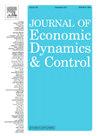创业和杠杆动态没有承诺
IF 2.3
3区 经济学
Q2 ECONOMICS
引用次数: 0
摘要
本文建立了一个动态流动性管理模型,以考察风险厌恶型企业家存在杠杆承诺摩擦时的相互依赖的消费组合选择和债务融资问题。首先,我们发现低风险厌恶导致主动债务回购,通过风险管理渠道为普遍存在的可赎回特征提供了新的理论基础。其次,高度的风险厌恶会产生杠杆棘轮效应。陷入困境的企业家会减少消费,但会冒更大的风险,为东山再起赌一把。为了分散经营风险,借款人加速发行风险债。最后,我们预测债务螺旋效应(杠杆均值回归)更有可能发生在借款人风险厌恶程度较低(较高)、债务期限较长(较短)或特殊风险较小(较大)的情况下。本文章由计算机程序翻译,如有差异,请以英文原文为准。
Entrepreneurship and leverage dynamics without commitment
This paper builds a dynamic liquidity management model to examine the interdependent consumption-portfolio choices and debt financing problems when a risk-averse entrepreneur has leverage commitment friction. First, we find that low risk aversion leads to active debt buybacks, providing a novel rationale for the prevalent callable feature through the risk management channel. Second, high risk aversion generates a leverage ratchet effect. The distressed entrepreneur reduces consumption but takes on more risk to gamble for resurrection. To diversify business risk, the borrower accelerates the issuance of risky debt. Finally, we predict that the debt spiral effect (leverage mean reversion) is more likely to occur when the borrower is less (more) risk-averse, debt maturity is longer (shorter), or idiosyncratic risk is smaller (larger).
求助全文
通过发布文献求助,成功后即可免费获取论文全文。
去求助
来源期刊

Journal of Economic Dynamics & Control
ECONOMICS-
CiteScore
3.10
自引率
10.50%
发文量
199
期刊介绍:
The journal provides an outlet for publication of research concerning all theoretical and empirical aspects of economic dynamics and control as well as the development and use of computational methods in economics and finance. Contributions regarding computational methods may include, but are not restricted to, artificial intelligence, databases, decision support systems, genetic algorithms, modelling languages, neural networks, numerical algorithms for optimization, control and equilibria, parallel computing and qualitative reasoning.
 求助内容:
求助内容: 应助结果提醒方式:
应助结果提醒方式:


